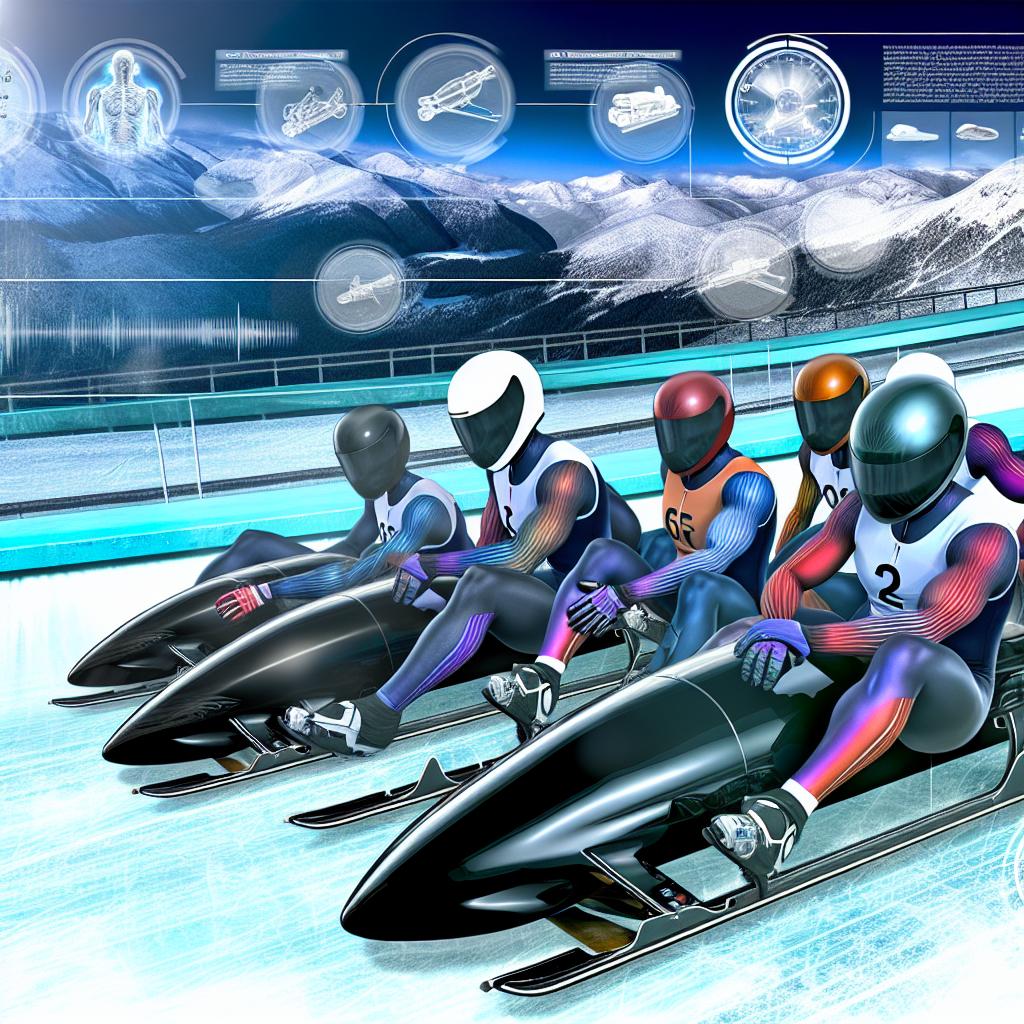Understanding the Basics of Skeleton Racing
Skeleton racing stands out as one of the most exhilarating and challenging winter sports. It involves athletes racing down an ice-covered track on a small sled, headfirst. Entering the Winter Olympic Games lineup, skeleton offers a thrilling spectacle for both the participants and spectators. This sport traces its roots back to the late 19th century, specifically on the Cresta Run in St. Moritz, Switzerland, where the unique combination of speed and skill first captured the imagination of winter sports enthusiasts.
The Equipment
The skeleton racing equipment is technical and specialized, designed to optimize speed while ensuring athlete safety.
Sled: At the heart of the sport is the sled. It is crafted from a resilient hard plastic resin and equipped with two steel runners, which allow it to glide smoothly over the ice. Notably, the sled lacks both steering and braking mechanisms. Direct control is absent, compelling athletes to rely entirely on nuanced body movements to navigate the twisting track. This demand for precision makes every race a testament to an athlete’s skill and familiarity with their equipment.
Helmet and Clothing: Safety and performance are paramount, requiring competitors to wear streamlined helmets and form-fitting race suits. These components are essential in reducing air resistance, allowing for higher speeds. Additionally, competitors don specially designed spiked shoes. These shoes are crucial during the start phase of the race, providing the necessary grip on the icy track surface to maximize the initial sprint’s effectiveness.
The Track
Skeleton races occur on bobsleigh tracks, characterized by their intricately planned design. Comprising a variety of curves and straight segments, these tracks cover a length ranging typically from 1,200 to 1,500 meters. The surface of the track is meticulously maintained ice, demanding constant management to preserve its condition for safety and consistency in race times.
The influence of the track on the sport cannot be overstated. Its architecture, including the number and type of curves, as well as overall gradient, plays a critical role in the dynamics and speed of the race. Each track is unique, requiring athletes to memorize its features to optimize their performance during competitions.
Race Technique
Skeleton racing isn’t merely about descending a track as fast as possible; it encompasses an amalgamation of technique and athleticism.
Start
The race commences with a running start, a critical phase that can impact the entire outcome. Competitors hold onto their sleds, pushing them while sprinting for approximately 30 meters. This sprint is alongside the sled, requiring coordination and speed before the athlete finally leaps onto the sled. This initial burst of speed is significant as it sets the stage for the entire descent. A robust and swift start can greatly influence the final race duration.
Descent
Upon mounting the sled, athletes must adeptly maneuver through the track’s many turns and straights. Precision is key, with competitors guiding their sleds by subtle shifts in body weight. This technique involves flexion or pressure on one shoulder and the strategic use of knee movements to smoothly navigate curves and accelerate along straights. A profound understanding of the track’s design allows athletes to make these minute adjustments, which can be the difference between winning and losing.
Finish
The race concludes when athletes cross the finish line, where their time is promptly recorded. Competitions often span multiple runs, and it is the combined time of these runs that determines the ultimate winner. The objective is to achieve the fastest total time over the designated runs, necessitating consistency in performance across all attempts.
Rules and Regulations
Skeleton racing, like many international sports, is governed by an overarching body: the International Bobsleigh and Skeleton Federation (IBSF). This organization provides a framework of rules which help maintain fairness and safety within the sport.
The rules clearly define equipment specifications, including limits on sled weight and dimensions, as well as guidelines to ensure athlete safety. These standards are stringently observed during competitions to ensure an even playing field and to optimize safety conditions for all competitors. The adherence to these regulations helps legitimize skeleton racing on the world stage, providing an organized and standardized competition environment.
Training and Skills
To excel in skeleton racing, athletes must cultivate a unique combination of attributes. Successful competitors blend speed, strength, and keen strategic thinking. Training is intensive, focusing on enhancing the physical conditioning necessary to maximize sprinting power and overall endurance.
Additionally, athletes refine specific techniques aimed at improving aerodynamics and mastering track navigation. The experience gained with each descent improves their tactical acumen, enabling better maneuverability and speed preservation during races. This integration of physical prowess and strategic insight is pivotal, allowing the athlete to make split-second decisions at high speeds.
On a broader scale, skeleton racing offers a unique spectacle, combining technical skill, sheer speed, and competitive excitement. It has garnered a passionate following worldwide, with fans drawn to its high-stakes intensity and the impressive athletic feats it entails.
For those interested in delving deeper into the world of skeleton racing, whether through participation or as a spectator, resources and information are readily available through organizations like the International Bobsleigh and Skeleton Federation. These platforms provide comprehensive insights, official records, and guidelines that can illuminate the intricacies and grandeur of this riveting sport.
